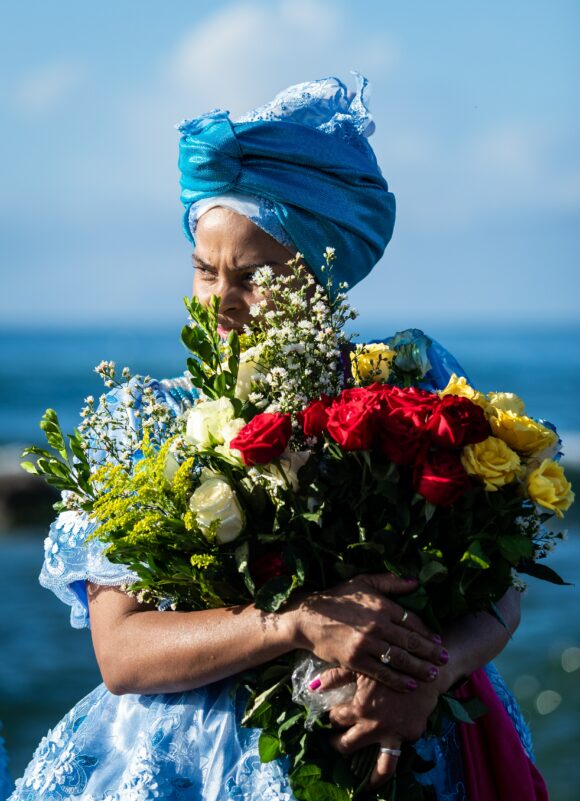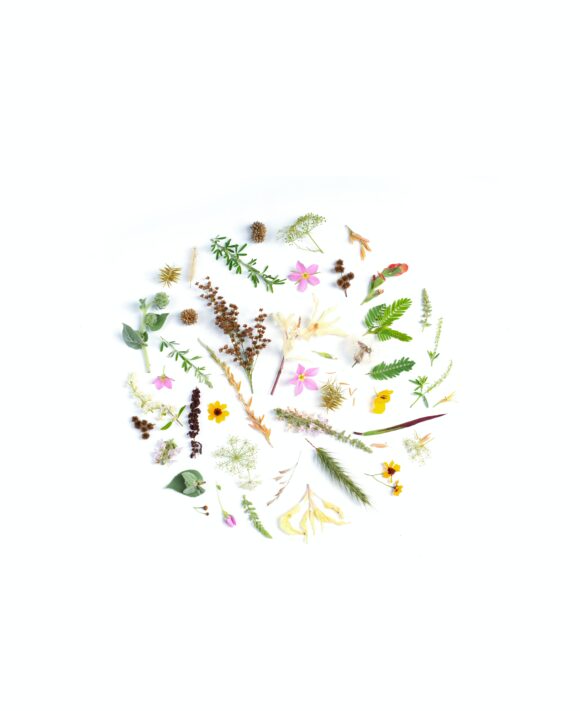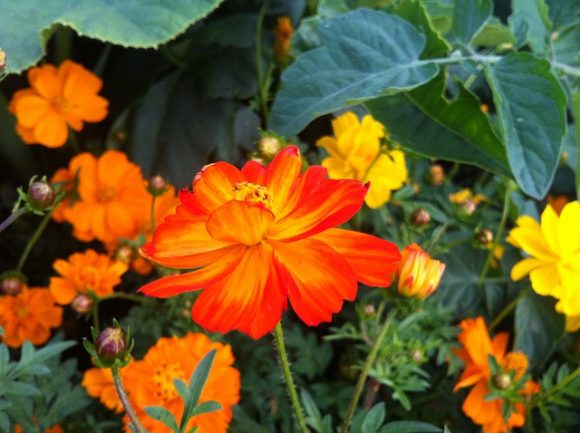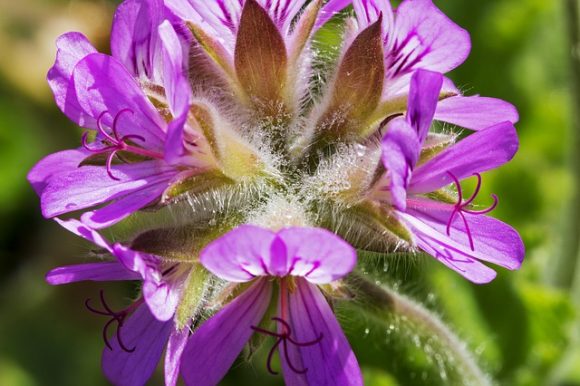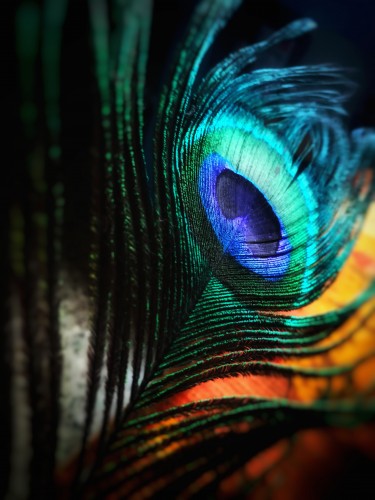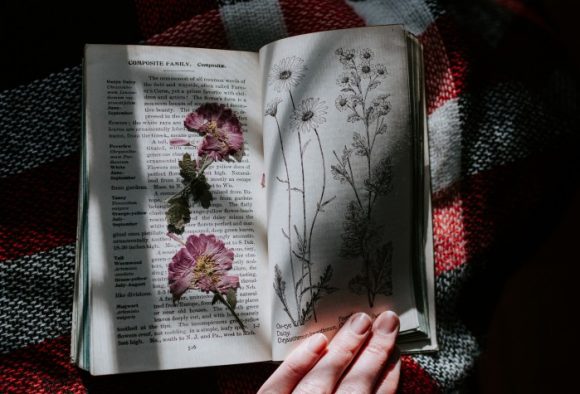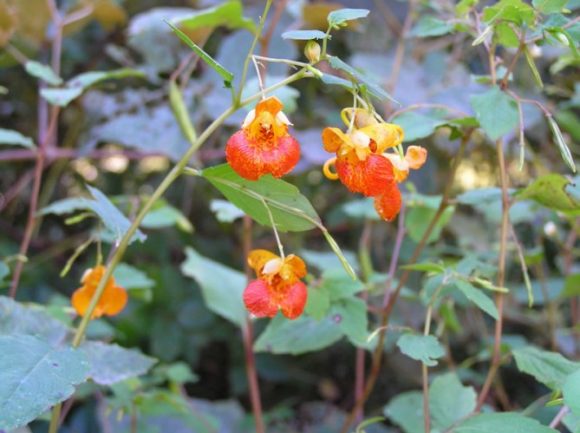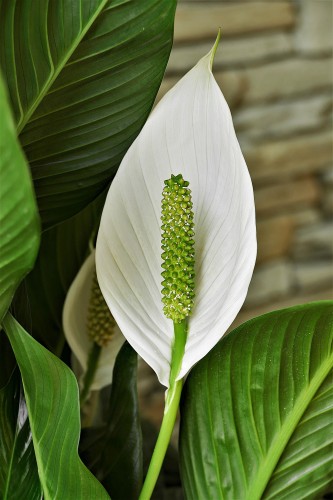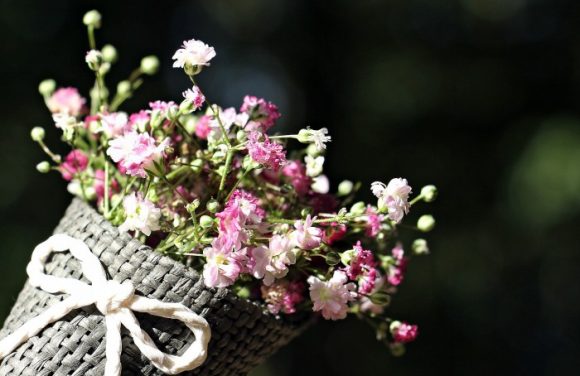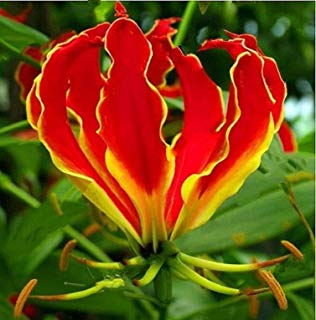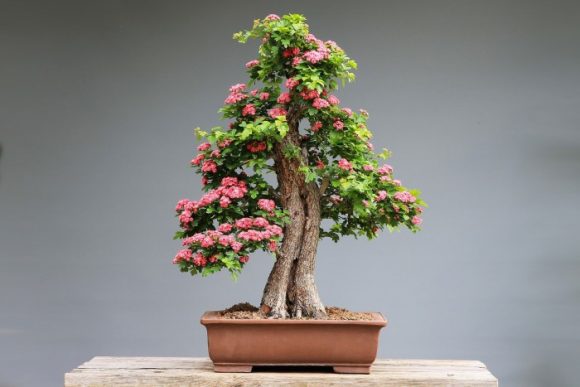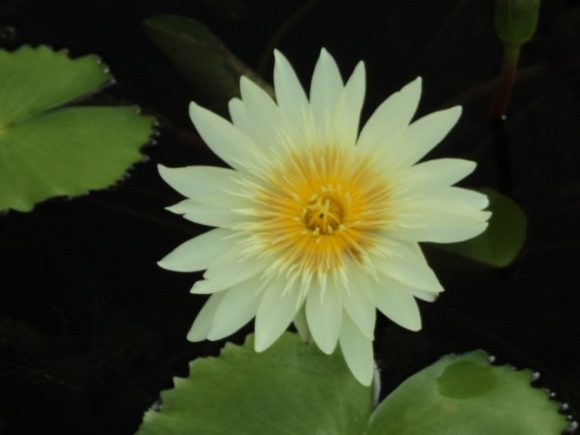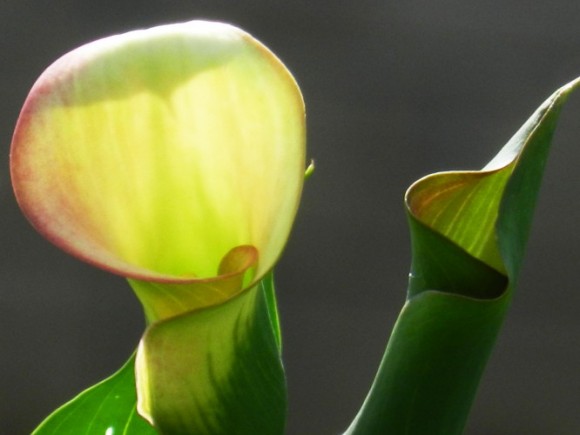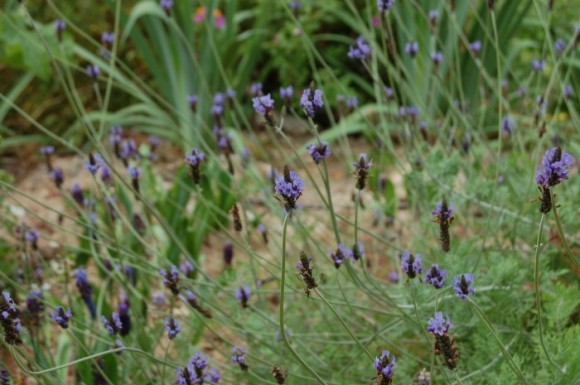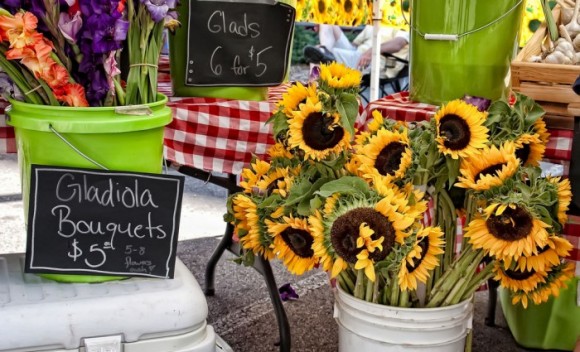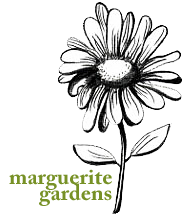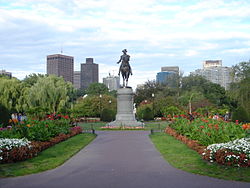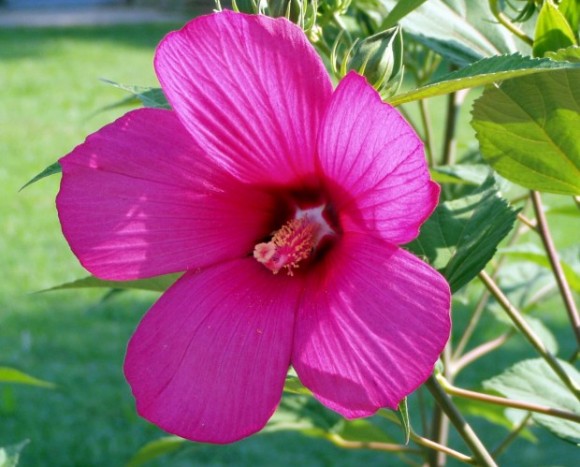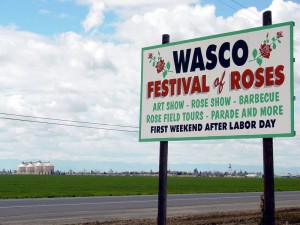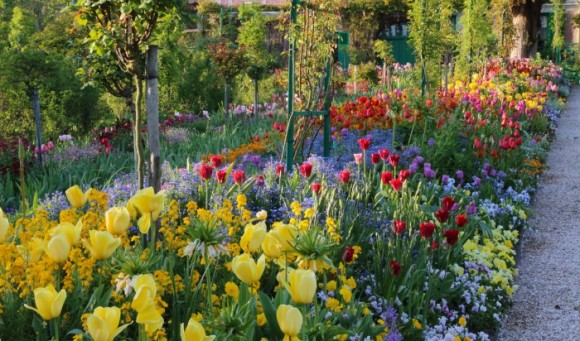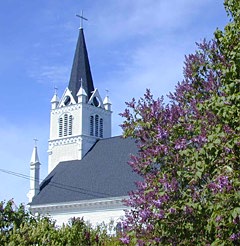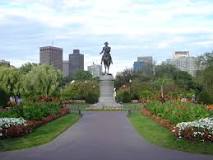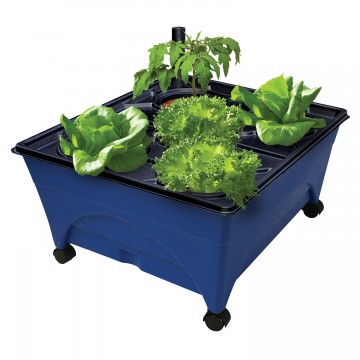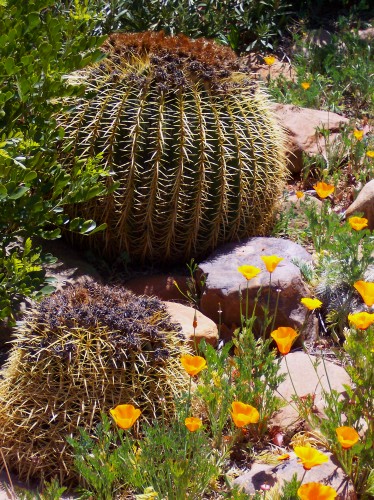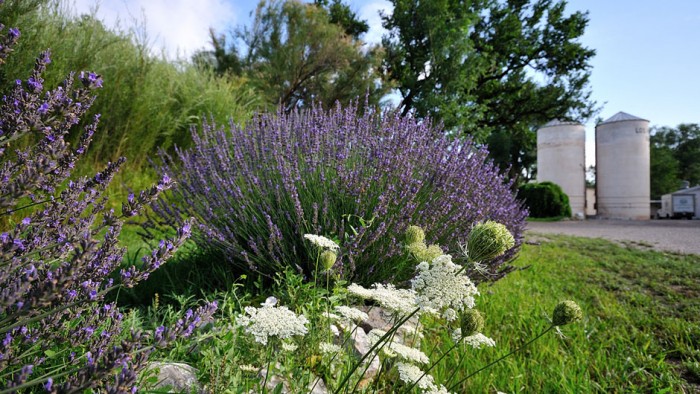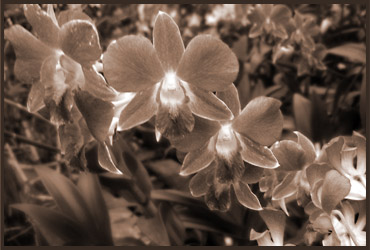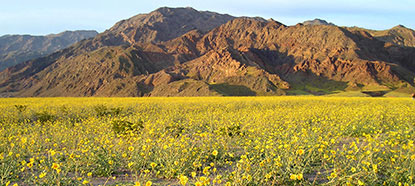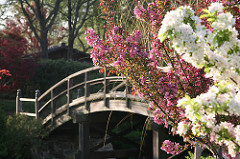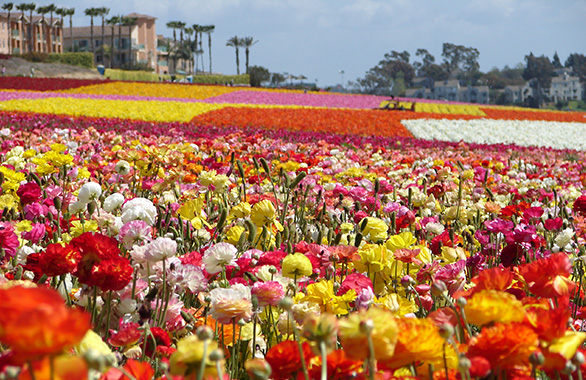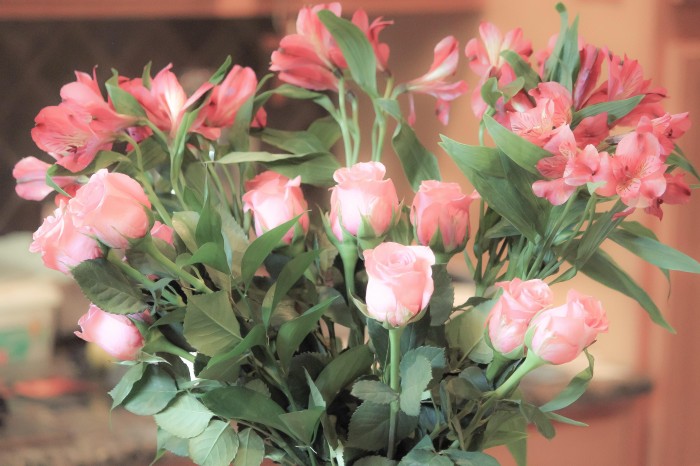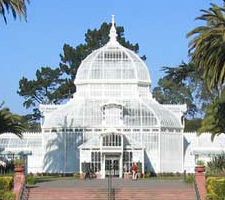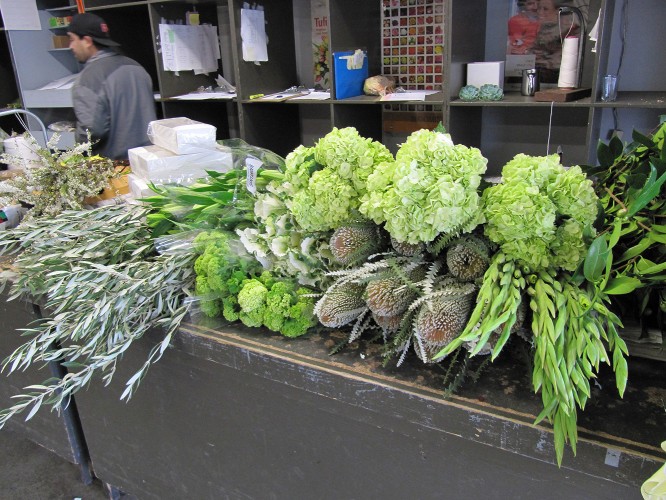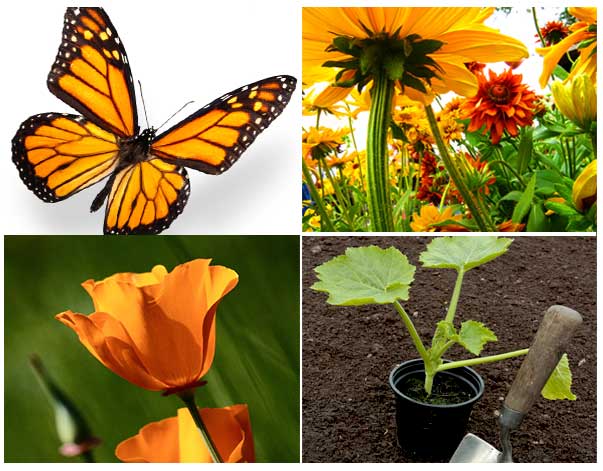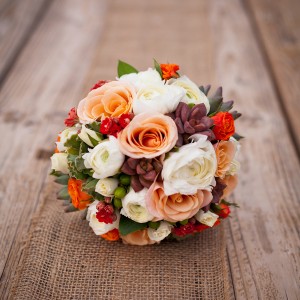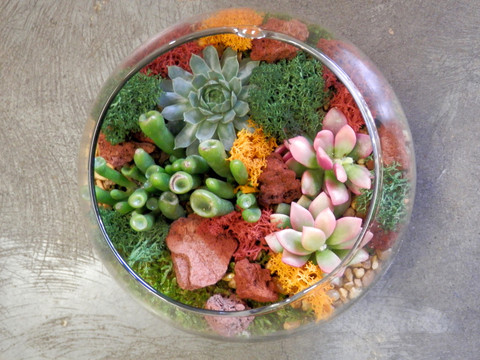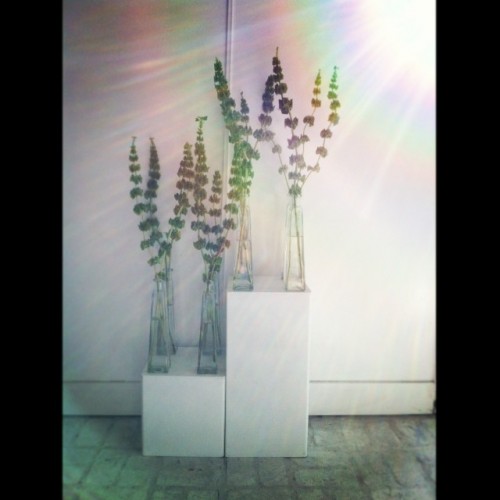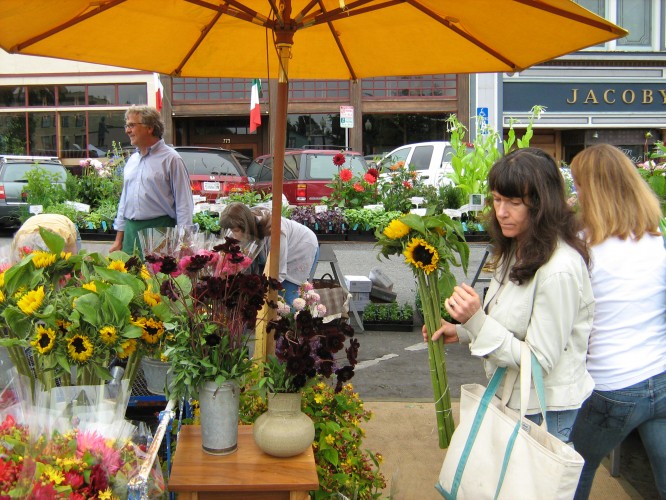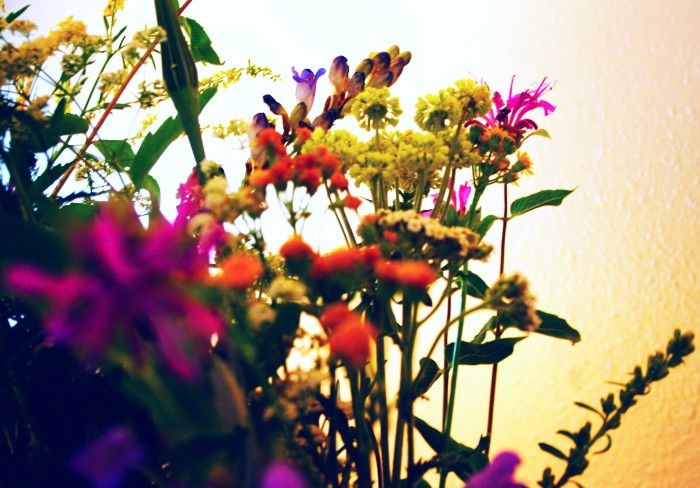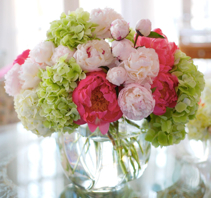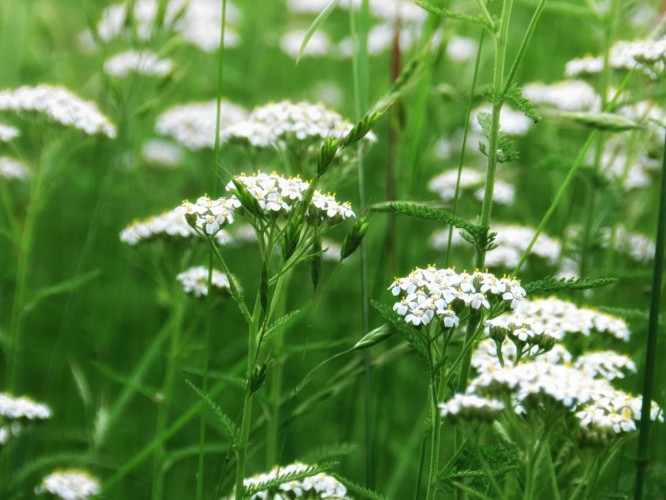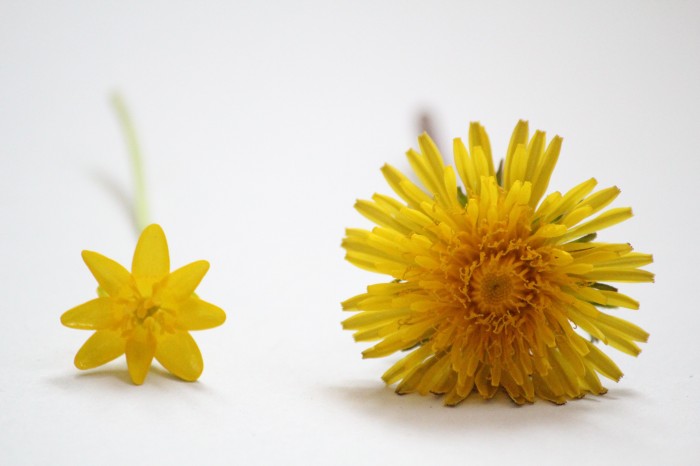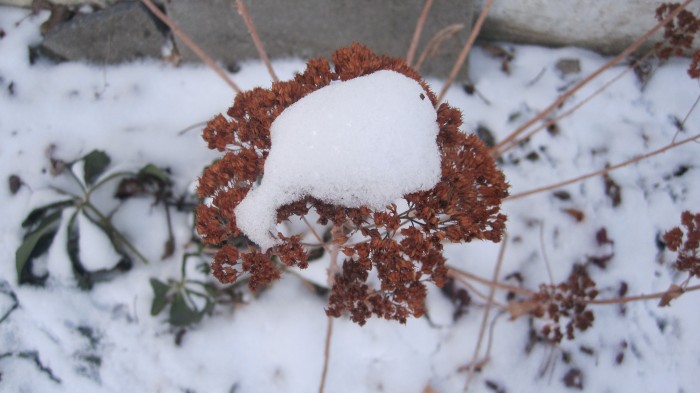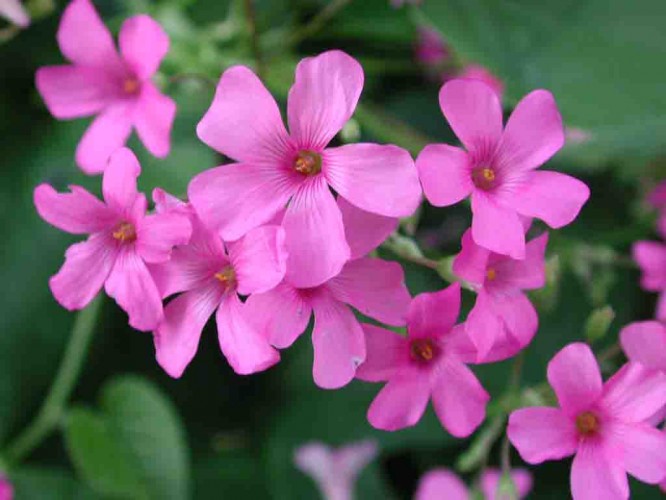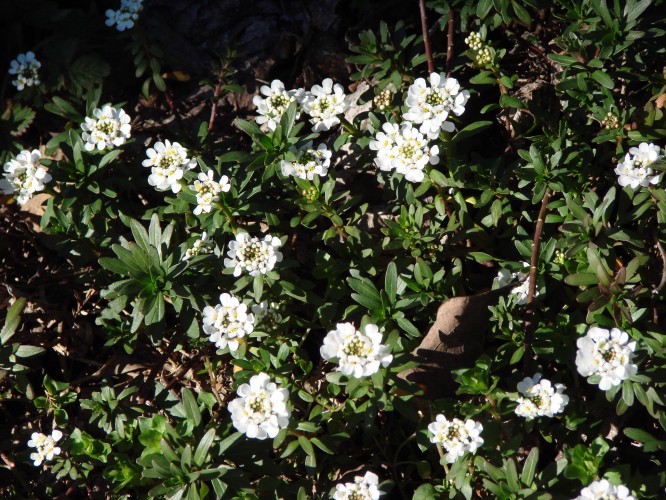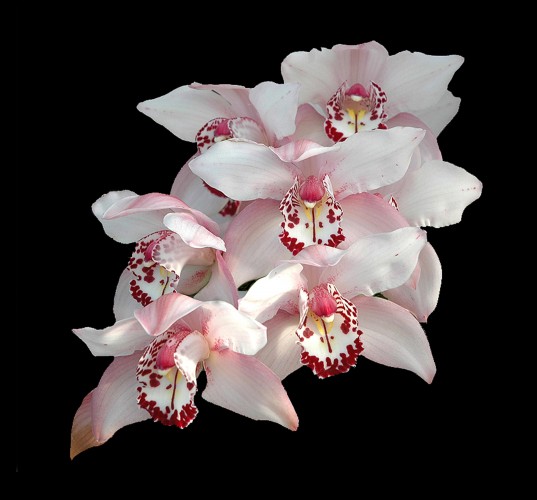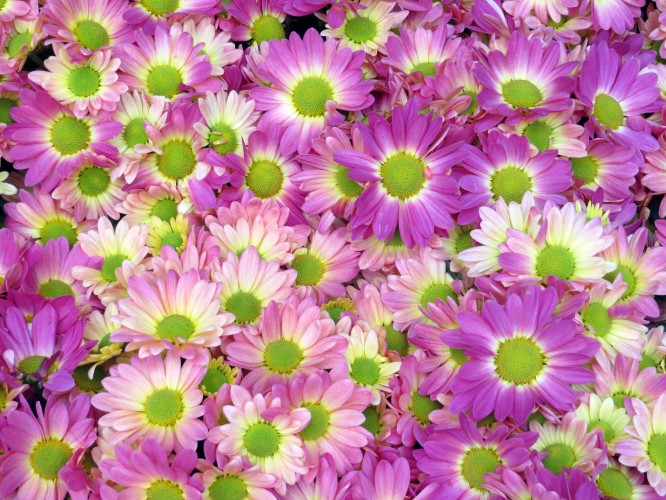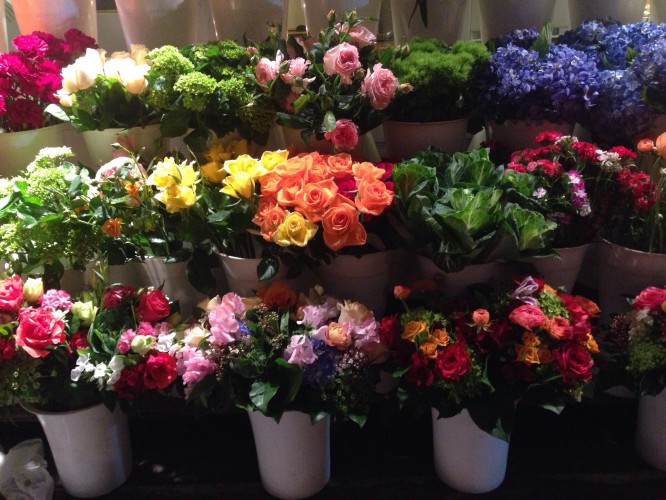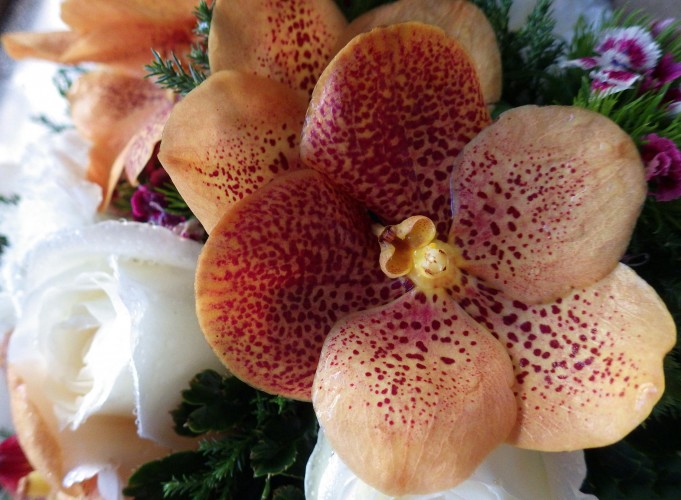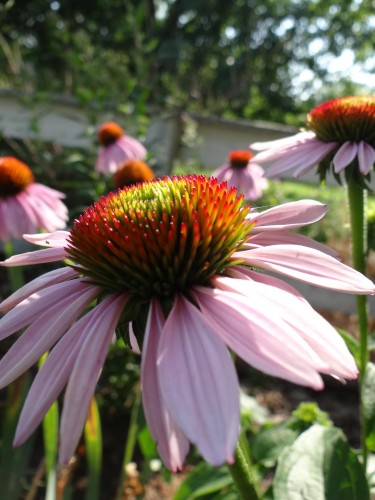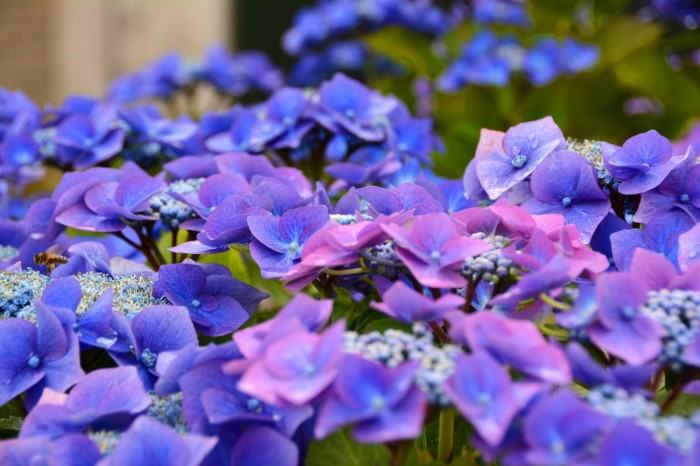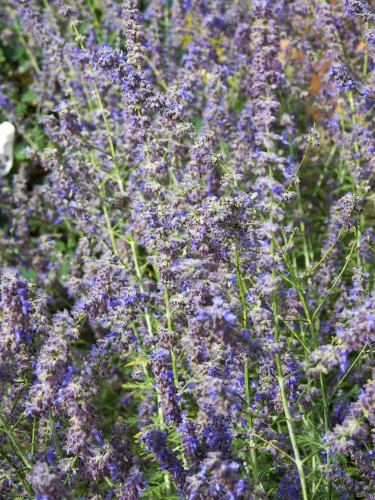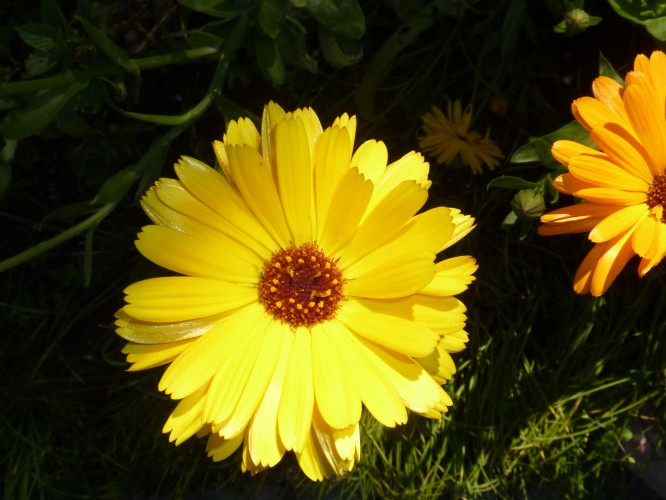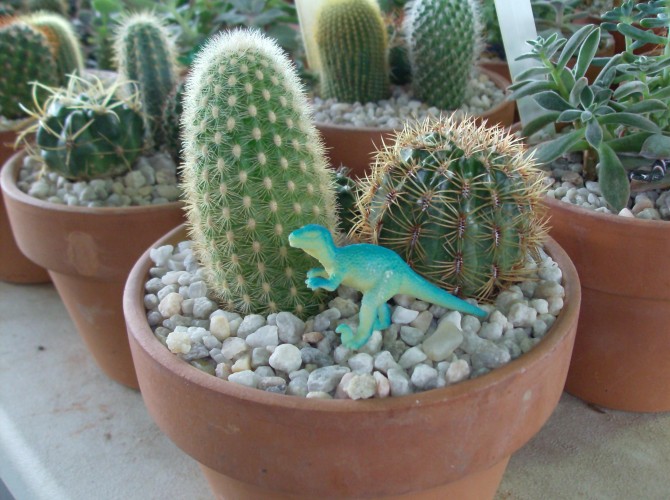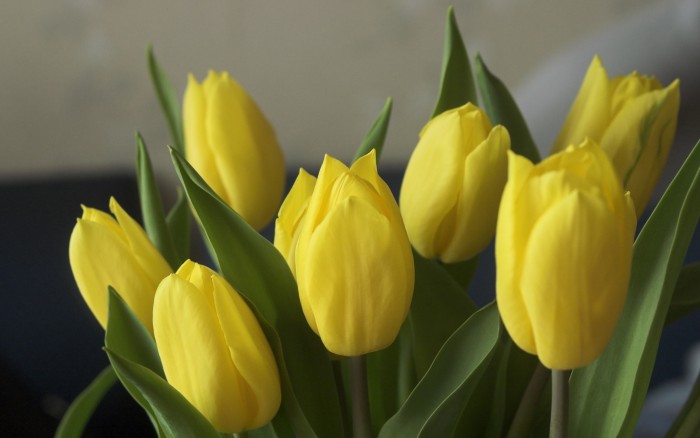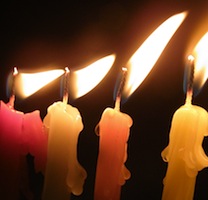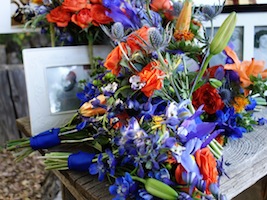Search Results for “”
Expressing Gratitude for Forgiveness the Victorian Way
expressing gratitude is a noble gesture, and the Victorian era had a unique way of conveying such sentiments through the language of flowers. In this article, I shall explain how you can use flowers to show gratitude in the same manner as the Victorians did.
Firstly, you must understand the significance of different flowers in conveying gratitude. For instance, Agrimony symbolizes gratitude, while Wisteria represents regret and Raspberry or Brambles represents remorse for your actions. Humility can be communicated with accents of Ground Ivy, Field Lilac, or Small Bindweed. Or if you wish to make the bouquet a bit lighter, Daisies are used to convey thankfulness and appreciation for the little things in life. Continue reading [...]
The Power of Flower Arranging
My dear reader, flower arranging is a skill that has been practiced for centuries and has evolved into a beautiful art form. A well-arranged bouquet not only brings beauty to a room but also has the power to convey messages and emotions through the language of flowers. Continue reading [...]
The Significance of Flowers in Different Cultures
This is just a fraction of the incredible cultures in our world today, all of which their own concept and meaning of flowers. Flowers have held symbolic meanings and cultural significance in many different cultures throughout history. From ancient Greece to modern-day Japan, flowers have played an important role in conveying meaning and representing cultural beliefs and traditions. Whether used in religious ceremonies or as a symbol of good fortune, flowers continue to hold an important place in cultures around the world. Continue reading [...]
Communicating Forgiveness With Flowers
The Victorian language of flowers is a beautiful way to express forgiveness and let someone know that they are truly forgiven. Here is a guide on how to say "I forgive you" using flowers. Continue reading [...]
Beautiful, Spicy and Remedial: Meet The Saffron Crocus Flower
Saffron crocus, or saffron, and botanically known as crocus sativus, is a perennial flowering plant of the crocus genus in the iris family. Its English name, saffron, is derived from a French word, safran. The word was borrowed from the Latin word safranum, which is thought to have originated from an Arabic word that means yellow. Continue reading [...]
Sacha Inchi, The Climbing Superfood
Sacha inchi, Inca nut or Inca peanut, and botanically known as plukenetia volubilis, is a woody, perennial climbing plant in the euphorbiaceae family. Though sacha inchi is known as Inca nut, it's not a nut per se but a seed. Continue reading [...]
Sulfur Cosmos: The Bright, Modest Multi Purpose Flower
Sulfur cosmos, orange sulfur, yellow cosmos, or bright lights, and botanically known as cosmos sulphureus, is an annual flowering plant in the aster or sunflower family. It is native to the Americas and Mexico but has now naturalized in Australia, Europe, Africa, and Asia. In most of these places, it was introduced as an ornamental plant but in some instances, its seeds were accidentally transported aboard merchant ships. Continue reading [...]
Rose-scented Geranium Flower : Ideal for Aromatherapy
Rose-scented geranium, botanically known as geranium pelargonium, is an evergreen perennial plant. It is native to the southern part of Africa but has spread to other regions of the world due to its fame as a medicinal and ornamental plant. Continue reading [...]
Festive Flowers for a Dazzling Winter Bouquet or Centerpiece
Winter is full of holidays and family gatherings that fill us with happiness and gratitude. Whatever you celebrate, a wintery bouquet will be a cheerful addition to any decor. Continue reading [...]
Creeping Woodsorrel: A Potential Treatment For Diabetes?
Oxalis corniculata, commonly known as creeping wood sorrel, sourgrass, or sleeping beauty, is a delicate, perennial, low-growing, flowering plant in the oxalis genus. It looks similar to the common yellow wood sorrel or oxalis stricta. Continue reading [...]
Accent Your Flowers With Unexpected Embellishments
Some of the most interesting floral arrangements contain more than just flowers. They may be accented with non-floral items to add color, texture, and height to the bouquet. Continue reading [...]
Pressed Flower Jewelry Makes Treasured Blooms Last for Years
By preserving blooms, you can create a piece of jewelry that keeps meaningful flowers looking beautiful for years to come. Continue reading [...]
Thoughtful DIY Gifts Made with Dried Flowers
As the growing season winds down and the holiday season approaches, our minds turn to gift-giving. What could be more thoughtful than a gift from your garden? Using dried and pressed flowers, you can craft unique floral-themed items for the special people in your life.
Continue reading [...]
A Longer Life for Your Perfect Floral Gift
If you've ever received flowers as a gift for any special occasion, you probably wished you could make them last longer than just a few days. Luckily, there are several tips and tricks to extend the life of flowers in a vase. Continue reading [...]
Gorgeous Green Blooms to Light Up the Room
When we think of flowering plants, we usually visualize green leaves with blooms in shades of pretty pastels and brilliant jewel tones. But did you know that there are many varieties of plants that have natural green flowers? Continue reading [...]
“Exploding” Jewelweed is Popping with Fun
Jewelweed is a yellow or orange flowering plant whose claim to fame is that the ripe seed pods "explode" or burst open when touched. Much to the delight of children and fun-loving adults, these plants have a quite entertaining method of dispersing their seeds. Continue reading [...]
Easy-care Houseplants Send Well Wishes for Years
Low-maintenance houseplants are thoughtful gifts that don't require too much care. Whether you choose a flowering plant, a plant with a legend attached, or one that helps to heal, your gift recipient will appreciate your well wishes for years to come. Continue reading [...]
Patriotic Petals: Check Out these National Flowers
The majority of the world's countries have a national flower that is meaningful to its people. These emblems may have been chosen by popular consensus, government selection, or a long-standing tradition in the history of the nation. Most national flowers are indigenous to the area that they represent. Many have played a role in a region's culture for hundreds of years or more. In general, the national flower is beloved by the people it embodies. Continue reading [...]
Magnificent, Stately And Beneficial:Magnolia Flower Medicinal Uses
Magnolia is a large tree, reaching about 80 feet in height with a diameter of 3-5 feet. Its family is known to be among the oldest trees in the world. These trees are so ancient that their blossoms do not have real sepals and petals. Instead, they have petal-like tepals. In addition, the flowers do not produce true nectar and are not pollinated by bees because magnolias predate bees, however, they attract pollinating beetles with fragrant, sugary secretions and fragrances. Continue reading [...]
Statice, Feverfew, Baby’s Breath, and More: Festive Filler Flowers that Stand on Their Own
Filler flowers are flowers that add volume and texture to floral arrangements. They may tend to be muted in color and may not have a strong fragrance. Nevertheless, many filler flowers are beautiful enough to stand on their own or as a focal point in a floral design.
Continue reading [...]
Musty and Culinary Sage
Common garden sage or sage is a woody, perennial plant with purple to blue blossoms that are edible. You can harvest the flowers and use them as decoration on cakes, pour hot water over them to make tea or use them to make herbal vinegar. Continue reading [...]
Set Your Garden on Fire with Gloriosa Superba
With a scientific name like Gloriosa superba, you might say that this fiery beauty is superb in color and full of glory. And you would be right! Continue reading [...]
Floral Perfume is a Bouquet You Can Carry with You
If you know someone special who loves flowers, consider giving them the gift of a floral perfume. With a floral perfume, they can carry their favorite flower's fragrance with them throughout the day. Continue reading [...]
Bring on the Dancing Girls: Impatiens Bequaertii
Among the world’s rarest and most enchanting flowers, Impatiens bequaertii is part of the impatiens family but has no acknowledged species name. Most notable for their petals resembling little dancing ladies in skirts, they are commonly referred to as dancing girls. Continue reading [...]
The Flower Named after Meghan Markle, Duchess of Sussex: Clematis Meghan
Being in the royal spotlight comes with many challenges, but clearly has its sweet spots. Clematis Meghan, named after the Duchess of Sussex, is making its debut at the famed Chelsea Garden Show May 21-25, 2019. Continue reading [...]
Pretty and Potent: Nasturtium Medicinal Uses
Tropaeolum majus also known as garden nasturtium, common nasturtium or just nasturtium is a flowering, herbaceous plant with trailing stems that can grow to 1 meter long. It has large, circular leaves with orange to red flowers featuring 3-5 petals. While it is native to South American, the medicinal value of nasturtium, coupled with the beauty of its flowers have made it a highly sought-after plant worldwide. Continue reading [...]
Bonsai is the Right Gift for the Patient Gardener
Bonsai refers to a tree or shrub that is grown in a shallow vessel and pruned to retain a compact form. This process can take years or even decades to achieve the desired result. It is said to promote inner peace and tranquility.
Continue reading [...]
The Fabulous Floating Water Lily
Loved by flower fans and frogs the world over, water lilies are floating-leaved aquatic plants in the plant family Nymphaeaceae. Native to South America, they only live in fresh water that is shallow and still. Continue reading [...]
Helleborus is an Early Messenger of Spring
Helleborus makes a thoughtful gift to a loved one's garden by providing color in winter and early spring. Usually found in shades of pinks and purples, their shape resembles a wild rose. Continue reading [...]
KISS ME YOU FOOL! It’s the Flower that Looks Like Luscious Red Lips
Move over Mick Jagger and Angelina Jolie, there’s a new pair of lips in town. And they’re kissable! Whether you call them hooker’s lips or hot lips or by their scientific name, Psychotria Elata, one thing is indisputable: These lips are unique–and stunning! Continue reading [...]
It’s Time for Macy’s Flower Show in NYC!
The time has come again for the annual Macy’s Flower Show in New York City! Every year, Macy’s presents an extraordinary array of floral arrangements, mini gardens and flower displays of the most magical kind. “Once Upon a Springtime” is the theme for this year’s show and it will surely delight with a new story to be told about beautiful blooms.
Discover the wonder of flowers and enter an enchanting land created in NYC’s Herald Square. Stroll through a spectacular setting and experience Continue reading [...]
5 Great Flowers for November
All flowers are beautiful and appropriate for giving anytime. But, certain flowers are standouts for November. They offer a look that's perfect for fall and a sense of warmth to convey just the right message during the holiday season. Continue reading [...]
Best Places to Send Flowers Online
How easy the Internet makes everything. With just a few minutes of searching, and a click of a “Pay Now” button, you can order and send nearly anything, including flowers. Continue reading [...]
Apps to Identify Flowers
Have you ever come across a flower in the wild and wished you knew what it was so you could give it to someone? Many people have, which is why there are apps to identify flowers. More than a handful of helpful mobile applications will let you snap a photo of a flower to find its name, or access a large database to match your find with a picture in the app. Continue reading [...]
Why You Should Give Lavender
William Turner, an English divine, physician, and natural historian discovered the magic of lavender centuries ago. But, since the time of the ancient Greeks, the world has had a love affair with the aromatic and healing properties of lavender. This fragrant beauty, with soft billowy flowers of violet, blue, and even white, has graced palace doorsteps and anointed kings and queens throughout history. Continue reading [...]
Shop the Denver Cherry Creek Farmers Market for Flowers
The Cherry Creek Farmers Market is considered “tops in the field” out of all farmers' markets in Denver and in Colorado. In fact, Colorado Biz Magazine says that the Cherry Creek Farmers Market is the “Cadillac of farmers’ markets among nearly 50 markets throughout Colorado.” If you’re looking for fresh flowers in Denver, and the chance to get outside, enjoy the fresh air and meet people while you’re at it, wake up early and shop for flowers and more at the Cherry Creek Farmers Market. Continue reading [...]
Visit Marguerite Gardens in Chicago
How does shopping in Chicago in an enchanted garden sound? Imagine you're tucked away in a tiny little flower shop where Belgian wrought-iron grates rim the ceiling and old Dutch shutters hang on the windows. You wander past Parisian bistro tables that spill over with flower buckets – all displaying a dazzling array of some of the most gorgeous blooms in the world. This is a scene almost indicative of what you’ll find at Marguerite Gardens, a top destination for shopping in Chicago for unique flowers and gifts. Continue reading [...]
Why You Should Visit Boston Public Gardens and Revere House
Boston Public Gardens first opened to the community in 1837. From the beginning, the botanical garden was decorated with beautiful flowers to enliven the spirit, which it still does today for many Boston visitors. With tranquil meandering paths and floral exquisites of all kinds, the Public Garden has a long history of treating Boston visitors to showy annuals and greenhouse plants that vividly display breathtaking colors and structure. Continue reading [...]
How to Make a Hibiscus Agua Fresca
Hibiscus flowers are beautiful to keep in the house or to give as a gift. They’re also stunning as decorations on cakes and cupcakes, and they taste amazing in a traditional Hispanic drink known as a Jamaica agua fresca. Continue reading [...]
Flower Ideas for Mother’s Day 2017
It’s Mother’s Day in just a few weeks, which means there will likely be much exchanging of flowers as gifts. If you’re one of the many who are planning to give flowers to your mother, wife, sister, or other mom in your life, you have several options to choose from. Continue reading [...]
Flowers in Seattle: Terra Bella Flowers and Mercantile
If you find yourself shopping for flowers in Seattle, either for yourself or to give as a gift, pop into Terra Bella Flowers and Mercantile. This florist runs an earthy little shop that finds inspiration from the “nearby woodlands where we collect moss covered branches, fallen lichen, and mushroom fronts.” Shop owner, Melissa, searches for “jewel toned blooms,” “soft grasses,” and “berry laden branches” to combine them into stunning arrangements that are unlike anything we’ve seen.
Welcome Continue reading [...]
The Poppy: The Official Flower of August
Did you know that the poppy is the official flower of August? It seems like a perfect official flower for a summer month, as it has a warm hue and petals that open up to the sun. Continue reading [...]
Find the Right Flowers at the WASCO Rose Festival
What do you think about visiting the "Rose Capital of the World?" How about heading to these unique place when it's overdone itself with roses, standing as more of a rose ambassador that one would think possible. Wasco, California will once again hold its annual Rose Festival, which includes a parade and is a perfect event for all ages. The fun takes place on September 10th, in Barker Park. The Festival is held every year on the first Saturday after Labor Day Weekend, a time when usually the weather has cooled a bit and all kinds of fun can be had. Continue reading [...]
Mississippi Residents and Visitors: Find the Right Flowers at the Fall Flower and Garden Fest
The 2016 Fall Flower and Garden Fest takes place on October 14th and 15th, in Crystal Springs, Mississippi. The festival, which focuses on "Healthy Living" and "Healthy Gardening" will fill the Truck Crops Experiment Station in Crystal Springs with flowers, people who love flowers, and ideas for bring more flowers into your life. Continue reading [...]
Fresh Flowers at the Santa Fe Farmers Market
If you live in Santa Fe, or if you’re visiting, you have to visit the Santa Fe Farmers Market for fresh summer flowers. Seasonal blooms are on display throughout the market, and many of the local vendors who sell these flowers are happy to help shoppers make the best decision for their flower needs. Continue reading [...]
View Stunning Flowers at Monet’s Garden at Giverny in France
When visiting France, you have the perfect opportunity to enjoy flowers as those who walked on earth before you did – one quite famous person, in particular. In France, you can head to the Fondation Monet at Giverny, a magical destination where guides will show you Claude Monet’s stunning garden and help you understand the impact that flowers had on the leader of Impressionist art. Continue reading [...]
International Flower and Trade Expo 2016 in Kenya this June!
This June, the fifth annual International Flower and Trade Expo (IFTEX) takes place in Kenya and it promises to be one of the best cut-flower trade fairs ever. The event will be held at the Oshwal Center in Nairobi, Kenya, and it’s already set to be the largest cut-flower expo on record in Africa. It’s also likely to become the biggest expo of its kind in the world. Continue reading [...]
Visit the Mackinac Island Lilac Festival this June
Do you live in Michigan or are you visiting Michigan this June? Looking for a place to vacation to during spring? Consider visiting the Mackinac Island Lilac Festival, which will take place from June 3rd to the 12th. Continue reading [...]
Visit the Portland Rose Festival this May and June
Portland residents – or anybody visiting Portland from late May to early June – the Portland Rose Festival is coming and you won’t want to miss it! Continue reading [...]
Visiting Boston: The Boston Public Garden and Revere House
Visiting Boston and want to find somewhere to look at beautiful flowers? Head to the Boston Public Garden and Revere House. Not only will you be able to view stunning floral gardens and arrangements, you'll have the opportunity to learn a bit about Boston's history and the history of the United States. Continue reading [...]
Growing Flowers with Hydroponics
Hydroponics is a great way to easily grow flowers indoors. It provides a means to enjoying their beauty without having to worry about obtaining soil or keeping soil at a specific balance.
If you’ve ever wanted to bring flowers into your home (perhaps even edible flowers), but don’t want to set aside a lot of time or space for them, consider growing blooms hydroponically. Continue reading [...]
Water-Wise Flowers for Summers in So Cal
Live in Southern California and planning your summer garden? Concerned about how you’ll be able to live with beautiful flowers through scorching temperatures, or with water restrictions that are in place in many areas?
There are some great ways to maintain a garden that has a big impact visually, but that keeps weather in mind and doesn’t use up precious resources. The following are some water-wise ideas for gorgeous summer gardens. Continue reading [...]
Coyote Family Farm in the East Bay for CSA Flowers, Produce, and More
If you live in the East Bay Area of California, you can buy flowers (in addition to produce and nuts) through several CSAs. If you don’t know what a CSA is, we highly recommend you do a bit of research on these cooperative farming groups to find out how you can become part of a collective that brings locally sourced food and flowers into households on a regular basis.
CSA stands for Community Supported Agriculture, and it’s a structure for farming that allows community members to contribute monetarily to local farmers to help them grow their crops. In return for their investment, CSA participants become members of the farming group and they get first-hand, direct access to the farm’s harvested crops daily, weekly, or at times set by the CSA. Continue reading [...]
Gorgeous and Green Floral Studio on Oakland, California
Oakland residents who need floral delivery (or anyone who wants to send quality flowers to someone in the East Bay Area,), can call Gorgeous and Green Floral Studio for perfect care with all their floral needs.
Gorgeous and Green Floral Studio delivers flowers and special gifts to homes and business in Oakland, Berkeley, and Emeryville. The company actually bike-delivers its lovely creations, so turn to this eco-friendly business for reliable and sustainable purchasing of flowers for a birthday, holiday, or other event. Continue reading [...]
Organic Lavender Farming at Los Poblanos Historic Inn & Farm in Albuquerque, New Mexico
Even in places that are typically dry and void of a lot of color, you can sometimes find floral abundance of the most glorious kind if you look hard enough. This is what’s possible for those who live in, or who visit, Albuquerque, New Mexico.
The city is home to an organic lavender farm that provides healing and aromatic oils, by way of organic lavender blossoms grown on land that also houses a historic inn. Guests staying at the Los Poblanos Historic Inn & Farm get to use the lavender oil-infused bath products as part of their stay. Continue reading [...]
Looking for Flowers in Hawaii? Visit the Oahu Flower Mart
For our flower-loving friends who live in Hawaii, or will be visiting Hawaii, we want to share a beautiful place to pick up gorgeous native Hawaiian flowers. The Oahu Flower Mart is a premier destination for cut-to-order and just-harvested flowers that will make your home, hotel room, business, or event space look stunning. If you already know about the Oahu Flower Mart, you certainly understand what we mean when we tell you that this is the top place to buy flowers on the island of Oahu. Continue reading [...]
Celebrate Spring with Flowers at Biltmore Blooms in Asheville, North Carolina
Throughout April, and until the end of May, Asheville, North Carolina will be bursting with flowers as part of Biltmore Blooms. The celebration will bring more than 100,000 colorful flowers to the Biltmore Estate, in Conservatories, Gardens, and many other gorgeous spots. Continue reading [...]
Visiting Amsterdam This Spring? Attend the Annual Amsterdam Tulip Festival
If you have plans to visit Amsterdam this spring, make sure you set aside some time to attend the annual Tulip Festival. No plans for a visit? Think about vacationing to the city, because there will be beautiful tulips blooming (and on display) all over the place and livening up public and private spaces like you may not have seen before. Continue reading [...]
The Cincinnati Flower Show to be Held From April 13th to the 17th
If you live in Cincinnati, or will be visiting the city, consider attending the Cincinnati Flower Show, which will take place from April 13th to the 17th. Even if you’re not in the area or don’t have a trip planned, if you’re close by, think about paying the show a visit.
The Cincinnati Flower Show is an international celebration of fantastic flowers and fine foods. It’s a five-day adventure in floral design, lectures, and entertaining that’s paired gourmet cuisine, fun kids’ activities, and much more. Continue reading [...]
Will You Catch the Rare Superbloom in Death Valley This Spring?
Once in a while, beauty overcomes situations that one would deem nearly impossible. This is what happens every decade or so in Death Valley, California, as a superbloom of Desert Gold wildflowers covers stretches of earth that doesn’t usually see much life. Actually, the area is know for it’s share, plus some, of heat-related misfortunes – hence it’s name.
This year, Death Valley is expected to see the rare and stunning super bloom, and park rangers say that it could come in the next couple of months. An abundance of gorgeous wild blossoms have already popped up in Death Valley as a precursor to the main event and given people passing through the region quite a show. Continue reading [...]
Places to View Spring Wildflowers in Arizona
Did you know that the Desert Botanical Garden in Arizona tracks wildflower blooms to let flower lovers know where to view the amazing natural displays during springtime? The Garden partners with many parks, and other gardens, in the state to give locals and tourists up-to-date information on where spring wildflowers are in abundance.
Since we’re in the middle of wildflower season right now, we thought we’d tell you where the Garden says you can view these beautiful blossoms. If you’re living in Arizona or will be visiting, consider making a trip to see them in all their glory. Even if you can’t make it to view these pretty flowers this year, the list below will help you to know where you can probably marvel at wildflowers next year.
Use the following guide to find out where you can view spring wildflowers in Arizona on car rides, walks, hikes, and many outdoor adventures. Continue reading [...]
7 Great Botanical Gardens in the United States
Where do you go in the U.S. to view beautiful flowers? There are dozens of places, but the following are 7 of the top spots to admire gorgeous blooms. Continue reading [...]
Spring Lemonades You Can Make With Flowers
If you’re planning a get-together for the upcoming Easter holiday, or for Mother’s Day or a spring bridal shower, you can use flowers to beautify your beverages and make them taste amazing.
Flowers go great in lemonades, in particular. They offer a bit of lovely spring color and flavor that’s perfect for sharing with others. The following are some floral lemonades we love the most. Consider making these in small or large batches. Continue reading [...]
Visit the Carlsbad Flower Fields
Each spring, Carlsbad, California residents and tourists flock to the city’s Flower Fields to enjoy a brilliant display of Giant Tecolote Ranunculus. The colorful show lasts about six to eight weeks, typically beginning in March. Continue reading [...]
The Right Flowers for Awesome Cocktails
Did you know that you can make awesome cocktails out of flowers? It’s possible to create beautiful and tasty drinks, from popular blooms like roses and lavender, for events and occasions or whenever you want to turn an average day into a special one.
The following three cocktails you can create from flowers that are easily found at a store, garden center, or in your own home: Continue reading [...]
The National Cherry Blossom Festival is Coming to Washington D.C.
What began as a simple flower ceremony on March 27th, 1912, when First Lady Helen Herron Taft and Viscountess Chinda, wife of the Japanese Ambassador, planted the first two trees from Japan on the north bank of the West Potomac Tidal basis, has turned into a national treasure. The National Cherry Blossom Festival in Washington D.C. now sees more than a million attendees each year who come to enjoy the beauty of the cherry blossoms and to gather in the spirit of community. Continue reading [...]
Kauai Orchid & Art Festival Marks the Arrival of Spring
On April 1st and 2nd, residents and visitors of Hanapepe, Kauai will be able to attend the Kauai Orchid & Art Festival at Hanapepe Town Park and surrounding areas. The Kauai Orchid & Art Festival showcases beautiful, exotic, and tropical orchids as well as gorgeous art by Plein Air painters (outdoor paint artists) from all over Hawaii, and it features many fun festivities to welcome the arrival of spring. Continue reading [...]
Spring Brings the Epcot International Flower Festival to Walt Disney World Resort
The annual Epcot International Flower & Garden Festival returns this year to celebrate flowers with themed events and gorgeous displays in Walt Disney World Resort. The event again will feature interactive areas for kids, the popular Flower Power Concert series featuring live music, and much more. Continue reading [...]
The 2016 Boston Flower and Garden Show Coming This March!
The Boston Flower and Garden Show is the biggest indoor spring flower show in the United States and one of the Top 30 Flower and Garden Events in the U.S. It returns this year with more stunning garden displays curated by renowned landscape professionals, and with lectures from some of the top local nursery owners and industry experts. Continue reading [...]
Georgia’s International Cherry Blossom Festival Coming This March!
Georgia’s International Cherry Blossom Festival will bring a series events to Macon, Georgia, during March, to celebrate the beauty of a pink and white-blossomed tree that symbolizes springtime in the United States. Beginning on March 1st, Macon will host several contests, concerts, and plant sales – among other fun things activities – in honor of the beloved cherry blossom.
Macon, Georgia – according to Congressional Records – is considered the Cherry Blossom Capital of the World. Every March, more than 300,000 Yoshino cherry trees burst with blossoms that seem to turn the city into one big cottony paradise. Cherry Blossom Festivalgoers will get to experience the spectacle as they participate in events meant to promote fellowship and city pride. Continue reading [...]
Water-Saving Flowers for Your Garden
Many places in the world right now are experiencing draught, which means that it’s a good idea for people living in those water-depleted areas to think about the flowers they choose for their yard.
If you live somewhere that’s challenged by draught conditions, but you love flowers and want to enjoy their color and energy in your yard, consider growing the following water-saving blooms. Continue reading [...]
Creating a Romantic Bouquet
What are the right flowers to use when you’re creating a romantic bouquet? Any blossoms, really, since flowers are a universal symbol of love. But, for a super-feminine, soft, flowy, and ethereal kind of romantic bouquet, we suggest the following: Continue reading [...]
Botanical Gardens in Los Angeles
Where do you go in Los Angeles to view beautiful flowers? There are dozens of places, but some of the best are at museums and botanical gardens. The following are destinations that we think any Los Angeles resident, or tourist, who loves flowers should visit at least once. These spaces are filled with gorgeous blooms, and they offer other fun surprises to delight and discover. Continue reading [...]
About the Los Angeles Flower District
Wondering where to find amazing flowers in Los Angeles? Many people who live in the city know that the LA Flower District is the place to go for flowers for a wedding, special event, or even the home. If you happen to be from LA and you haven’t heard of the LA Flower District, or visited it, we suggest you get yourself there right away because the selection is outstanding and the prices are great.
If you don’t live in Los Angeles, but will be visiting, head to the Flower District while you’re here and enjoy choosing beautiful blooms from hundreds of vendors or just looking around a bit to admire the view. Continue reading [...]
Bulbs to Plant During Spring
Many gardeners like to plant bulbs during fall for spring arrival, because the bulbs breathe new life into a space that might have been dull during winter. And, because they give forth blooms that are perfectly suitable companions for spring-blooming wildflowers.
But, spring-planted bulbs also give off a show and it’s one that we think is worth consideration. These bulbs dazzle with color during summertime, and they offer a welcome surprise during a season that’s not known for offering abundance in a garden.
The following are some of the best bulbs you can plant during spring, if you want to enjoy the beauty of brilliantly colored and shaped flowers during a time when many landscapes are looking a bit torched. Continue reading [...]
Macy’s Flower Show
The dates have been set for one of the most anticipated events in New York City, Macy’s Flower Show. While we don’t yet know the theme for this year’s show, it’s sure to be as amazing as in years past.
If you’re not familiar with Macy’s Flower Show, it’s a spectacular extravaganza of flowers that fills up Macy’s Herald Square in New York City. Each year, the show brings dozens of varietals of flowers together, in brilliant colors, to offer a theme of floral celebration to attendees. Continue reading [...]
New England Grows 2016
New England residents, and anyone visiting Boston later this year, mark your calendar for one of the most fun landscape and gardening shows in the country. New England Grows is returning to Boston in 2016, and it will bring fresh floral displays, new vendors, and more opportunities to celebrate flowers and nature.
New England Grows is a popular flower and garden show that takes place minutes from Downtown Boston. It’s combing back for three days of flower and gardening thrills, from November 30th to December 2nd, and it will take place again at the Boston Convention and Exhibition Center. New England Grows will feature horticulture shows, vendors, and many chances to learn about beautifying your home with flowers. The event gives show visitors access to a huge showroom filled with contemporary exhibits as well as many products that will help you become an expert gardener, if you’re not already a pro.
Continue reading [...]
The Conservatory of Flowers in Golden Gate Park
The Conservatory of Flowers in San Francisco’s Golden Gate Park is one of many beautiful spaces to relax and enjoy nature in the city. The beloved local gem, and top tourist attraction, is a place where you can connect with the abundance of the Earth and join the San Francisco community in a shared love.
The Conservatory is a historic landmark where San Francisco residents, and city visitors, have gone for more than a century to view Victorian architecture and gorgeous flowers. It’s a place worth visiting at least once in a lifetime so that one can take in the stunning sight of perfect wood and glass building design along with a tale of San Francisco history, as told by brilliant blooms and blossoms. Continue reading [...]
About The San Francisco Flower Mart
Flower lovers who live in San Francisco, or are visiting the city, should make their way to the San Francisco Flower Mart at least once to purchase flowers or simply checkout the amazing offerings. The San Francisco Flower Mart is a wholesale mart that dates back to the late 1800’s, when nature’s floral abundance filled the Bay Area’s land with a variety of flowers and flower growers came to sell their bounty near Lotta’s fountain in Downtown San Francisco.
For three days out of the week, the growers would pedal their flowers to local flower shops and they would gather, in an ethnically diverse group, to fill the needs of a growing market. Continue reading [...]
The San Francisco Flower and Garden Show 2016
If you live in San Francisco or will be visiting the city during the middle of March, consider attending the San Francisco Flower and Garden Show. The 2016 show takes place from March 16th to the 20th, at the San Mateo Event Center, and it will feature some amazing designer gardens as well as a beautiful collection of artfully arranged plants, flowers, and trees.
If you live in San Francisco or will be visiting the city during the middle of March, consider attending the San Francisco Flower and Garden Show. The 2016 show takes place from March 16th to the 20th, at the San Mateo Event Center, and it will feature some amazing designer gardens as well as a beautiful collection of artfully arranged plants, flowers, and trees. Continue reading [...]
Top Florists in Las Vegas for Weddings, Conventions, and Other Occasions
Getting married in Las Vegas and need a florist? Visiting Vegas and want to pick up flowers for your hotel room, or for someone special? Maybe you’re in charge of planning your company’s conference in Las Vegas. There are tons of florists in Las Vegas to help you out with nearly any flower need, which is great because there’s a lot of demand for flowers when you consider an average of 315 weddings take place in the city each day and an average of 22,103 meetings are held there every year. Continue reading [...]
Floris Hiroko Flower Shop in Shinagawa Tokyo
Because we love flowers so much, we’re always eager to share the flower love and help people get their hands on gorgeous blooms wherever they are. We’ve been showcasing some of our favorite places to buy flowers, in some of our favorite cities like San Francisco and Paris, and today we thought we’d virtually visit Tokyo and offer a tour of a great florist’s space.
We wanted to give Tokyo residents, and visitors, a source for stunning flowers in case they didn’t have a go-to flower shop for impulse purchases or holiday gifts. We recently found the amazing Floris Hiroko in Tokyo, and we thought you might want to read about this family-run shop and find out what’s happening in the world of flowers there. Continue reading [...]
The Best Flower Shops in Paris
Imaging the prettiest, most romantic, most wonderful flower shops in Paris. The ones that call to you from the street, begging you to pick up a single bloom to hold for the day or a bunch to take back home for your kitchen table. The shops that spew color and charm, and the ones that have the friendliest of proprietors selling the blossoms inside.
These are the flower shops we’re highlighting in this post. We’ve been on a hunt for the top flower shops in some of the cities we love, and we had to include Paris and its offerings in our quest. Continue reading [...]
Fabulous Flower Shops in San Francisco
Looking for an amazing flower shop in San Francisco? There are dozens, but a few come to mind when we’re thinking about the best places to buy single blooms for your apartment or pretty bouquets to take somewhere as a host or hostess gift.
When you’re visiting what we think is the most beautiful city in the world, or if you’re lucky enough to live there, visit the following flower shops for floral beauty for yourself or someone special that’s absolutely beyond compare. Continue reading [...]
Top Flower Shops in Los Angeles
Living in Los Angeles and looking for an amazing flower shop? Visiting the city and searching for a fantastic florist? We have a few ideas for you.
The City of Angeles is full of fabulous flower studios, in the downtown area, by the beaches, and in many places in between. Whether you’re shopping for flowers for your home, the office, or someone special, you’ll be able to pick up beautiful blooms at many beautiful shops in LA.
The following, however, are some of our favorite flower shops in Los Angeles. These florists incorporate gorgeous studio design into their collection of offerings, which always includes an incredible array of flowers. We love buying flowers at these places, but we also enjoy lingering to soak in perfection and beauty. Continue reading [...]
Why Grow and Buy Organic Flowers
We love flowers. But, we love them most when they’re organically grown. Organically grown flowers are clean (and beautiful) flowers grown without the use of harmful pesticides and herbicides, which means they help keep our environment and us healthy.
Whether you’re purchasing flowers from a flower shop, ordering blossoms online, or growing your own flowers, you can have stunning options of the organic variety quite easily. Continue reading [...]
More Good Reasons to Give Flowers
Sometimes, a gift of flowers can be just what a person needs to make his or her day a better one. If you know someone who’s going through challenges, and you’d like to offer a bit of cheer, consider sending flowers. Continue reading [...]
Reasons to Buy Flowers Just Because
Have you ever thought about buying flowers for someone “just because?” Just because you love a person, or because you wanted to brighten up his or her day? Maybe because you had a great time on a date or because the way someone makes you feel compels you to give a special gift?
These, and more instances like them, warrant “just because” flowers and the giving of flowers in circumstances other than on a birthday or holiday. Anytime someone inspires you to do a good deed, or inspires you to celebrate what’s good about the world, is a perfect time to involve flowers. Continue reading [...]
Reasons to Give Flowers as a Gift
If you want to give a gift to someone, but you’re not sure what to buy, consider flowers. Flowers can be perfect gift for a person you know well or hardly at all. Flowers are beautiful, thoughtful, and cheap if you cut them from your own garden or purchase small arrangements. They’re ideal gifts for people young and old, near and far.
The following are some of the reasons you might want to choose flowers for a gift for someone, but there are many more (and actually any occasion is suitable to offer flowers). Continue reading [...]
Flowers for a Picnic
Planning a picnic and wondering which flowers would make a perfect centerpiece for your table or blanket? There are many blooms you can turn to, but we think the following are perfect.
The flowers listed below are ideal for creating a peaceful, romantic, or relaxing setting that’s idyllic for a picnic meal.
Daisies
Daisies are lovely flowers for a picnic because they seem to speak of the beauty of the outdoors. Daisies, either big or small ones, are carefree and just what’s needed for Continue reading [...]
Flowers that Grow Well in Alaska
It’s often easy to find flowers that grow well in warm climates, but if you want to grown beautiful blooms where it’s cold you’re sometimes hard pressed. We were wondering which flowers thrived in Alaska, a place known for extreme cold and a locale that would certainly look lovely with some color strewn about.
So, we researched and found that the following flowers do excellently in Alaska, when given the proper attention. Continue reading [...]
Flowers to Soak in a Bath
Whether you suffer from skin conditions like eczema or psoriasis, or just like to take luxurious care of your skin, you might want to soak the following skin-soothing flowers in your warm bath water. Continue reading [...]
Flowers that Can Soothe Skin Rashes
Have you ever had a skin rash and looked for something effective, but gentle, to treat it? We have. We usually turn to natural sources of healing for issues that arise with our body, so we love the fact that the following flowers can be used in ointments, masques, and bath soaks to relieve skin rashes.
Continue reading [...]
Perrenials that Can Survive Harsh Winter Weather
Many parts of the world experience harsh winters, which means these regions are sometimes challenged when it comes to maintaining beautiful flowers. But, despite frigid temperatures, and snowfall that can completely cover the land, there are some perennials that manage to survive and thrive.
Depending on where you live, you might be able to get away with planting the following perennial flowers in your garden. While you may not see blooms during winter, don’t give up on these plants! They’re likely lying dormant for the winter, and they’ll soon burst to life during spring. Like people, flowers often prefer to lay low and holed up during extreme weather. Continue reading [...]
Flowers that Grow Fruit for Your Garden
What do you think about having pretty flowers around your garden that will turn into something even more special? We think the idea for double the pleasure sounds divine, so we’re committed to bringing some fruit-bearing flowers into our garden this spring.
There are many kinds of flowers that will provide sweet fruit for you to eat. You can grow these flowers in your yard, in hanging baskets, and even in vertical gardens on patios. Continue reading [...]
Easy Flowers to Grow Indoors
If you live in an apartment, condo, loft, or other home without out a lot of outside living space, you may be attracted to keeping flowers indoors. Flowers bring a bit of beauty and oneness with nature into our lives, so we completely understand a desire to have these things despite not having an outdoor area to enjoy them in. Continue reading [...]
Flowers to Give on a First Date
Some people like to follow tradition when it comes to first dates and offer a bunch, or a single bloom, of flowers as a kind gesture. We love this tradition. We think it speaks a lot of a person to give a simple, beautiful gift from nature to express the beauty of a potential new relationship.
Flowers given to a first date show thought. They display generosity of spirit and a desire to please someone else, which is a great foundation for any partnership.
If you’re going on a first date and are thinking about bring flowers, you don’t have to choose anything elaborate or expensive to make an impression. You can find flowers to fit almost any budget in a grocery store, or at a florist, that will due just fine because they’ll provide a bit of beauty for your recipient to enjoy. If you have access to a garden, you can simply cut a few flowers and wrap them modestly, and still show your appreciation for the chance to spend time with someone. Continue reading [...]
Flowers that Thrive Indoors During Winter
Are you looking for indoor flowers to replace your Christmas tree and mistletoe when the holiday season is over? We are, so we searched for some blooms that can thrive inside during winter.
We found quite a few. The following are the indoor, winter-loving flowers that most piqued our interest. We’re going to check our local farmers’ market and nursery in the next week or so to see if they’re carrying these gorgeous flowers. If they aren’t, we’re thankful that we can always buy flowers online. Continue reading [...]
Fragrant Flowers for Winter
Winter brings many delights, including the chance to bundle up and the opportunity to take in delicious smells. The experiences and aromas of winter are precious, and they’re things that we look forward to all year. As you throw on your favorite boots and sweater this season, and step out into the brisk air or chilly snow, consider bringing the following flowers into your home or garden for a perfect fragrance of winter. These blooms may not be what some people think of when they imagine a winter blossom, but their smell fits right in with sugar and spice and everything nice. Continue reading [...]
More Ways to Wear Flowers in Your Hair
We recently wrote about pretty flowers that you can wear in your hair. Today, we’re thinking of even more flowers to adorn the hair and some specific ways that you can wear them.
Even if you have the most beautiful bloom for your hair, you need to find a way to secure it to your head if you want to go out and show if off. We’ve put together a few methods for fixing flowers in your hair so that they’ll stay with you all day long, or into the evening if you want to look flowery for a night affair. Continue reading [...]
Flowers to Put in a Flower Crown
Are you making a flower crown for a wedding, a festival, or just because? We’ve often wanted to create a pretty floral crown for an event, or simply to wear because we want to feel pretty.
We’ve found that any flowers look stunning when turned into a crown, but the following are some suggestions we have if you want specific ideas for blooms to make a flower crown: Continue reading [...]
Choosing Flowers at the Grocery Store
If you’ve ever been in a pinch to buy flowers and thought about making a last-minute purchase at the grocery store, this guide is for you. Usually, the best quality flowers, and the cheapest, are not the ones found at the supermarket. But, sometimes, in a crunch, these are the only ones that are available and we realize this.
If you ever need to buy last-second flowers at the market, consider choosing bouquets and arrangements from a natural foods market like Whole Foods or Sprouts. Flowers sold there are often the freshest and they’re sometimes grown without dangerous pesticides, which we appreciate. Continue reading [...]
About the Rose: Everything You Wanted to Know
“A rose by any other name would smell as sweet.” This we know. But, the rose’s name has become synonymous with love and friendship, so we appreciate being able to refer to it when we’re pondering these thoughts for a special person.
The rose is a flower that can be given to express innocent love, deep and true love, commitment, gratitude, and dozens of other feelings that we have for others. It’s long been referenced in history as a flower symbolic of many emotions, and it’s a bloom that takes on even more meaning when chosen in certain colors. Continue reading [...]
Flowers for a Hawaiian Wedding
Are you planning a Hawaiian-style wedding or a wedding in Hawaii? If so, we have some flower ideas that you might like. There are quite a few Hawaiian flowers that look lovely in a bouquet, corsage, or flower arrangement. These tropical blooms are perfect for casual or upscale weddings, weddings with most every color scheme, and weddings of almost any budget. Continue reading [...]
Flowers for a Beach House
If you live by the ocean and are looking for the perfect flowers for a beach house, there are many beautiful blooms you can choose from. You have some gorgeous blossoms available to you that will bring a laid-back feeling of shorelines and waves into your kitchen, living room, or bedroom. Continue reading [...]
Flowers to Help Honey Bees Thrive
The fate of the honey bee is in question, as the decline in the honey bee population has been noted by scientists and brought to the public’s attention by filmmakers. The honey bee serves many important functions in our eco-system, including pollinating plants so that they might produce food for us to eat. This is one reason why it makes sense to help the honey bee thrive.
In order to keep the honey bee population strong, there has to be an abundance of plants around that will give them pollen and nectar they need. And, these plants must not be heavily sprayed with pesticides, because these chemicals are detrimental to the bee. Continue reading [...]
Flowers for Hanging Baskets
If you’re putting together a hanging basket for yourself, or ordering one to give as a gift, the following flowers are great choices. They’re boldly colored, have long and gorgeous stems, and thrive in baskets when watered appropriately. Continue reading [...]
The Best Place for Flowers in New York City
If you live in New York City, you might know about a flower shop that’s a bit out of the ordinary. It’s a special spot that allows one to grab some pretty flowers for the house and then grab a drink. The place is called Sycamore, and it’s a fun destination in Brooklyn where you can choose the right flowers for any occasion and then celebrate your purchase with just the right cocktail. If you’re not from NYC, but will be visiting, make a point to hit up Sycamore Bar and Flower Shop. We think you’ll love it as much as we do. Continue reading [...]
The Best Flowers for People with Allergies
Do you live with allergies but love flowers? Do you want to give some beautiful flowers to someone who’d appreciate them if not for their allergies?
There are some gorgeous blooms that you can keep in your home, or give as a gift, that likely won’t cause an allergic reaction. These blossoms are fragrance-free or mildly fragrant, which helps keep irritation at bay. Continue reading [...]
Flowers to Attract Wildlife
Do you love the idea of wildlife hanging out in your garden, or stopping by to visit your patio? We do. So, we did a little research to find out which flowers wildlife are attracted to.
We wanted to get an idea of flowers that would be great for planting, or giving to someone, so that beautiful creatures would be enticed to come to our home or to our friend’s house. Continue reading [...]
Indoor Flowers for a Modern House
Are you looking for contemporary flowers to decorate your modern house? We have some ideas for you. We’ve put together a list of flowers that look stunning as part of a modern decorating scheme. All of these flowers do well indoors, which means you don’t necessarily need to get a lot of light in your house for them to thrive. But, if your house gets quite a bit of sun, these flowers will surely be okay too, and they’ll likely flourish. Continue reading [...]
Flowers for Healing
Do you know that there are some sicknesses that can be treated with flowers?
Certain flowers offer healing because flowers they can lift the spirit and bring a positive mindset to an ill person. Which will surely help the regenerative process. But, flowers can also be consumed to health the body. Some flowers, after ingestion, can help you get well. And, there are particular flowers that, when applied to the body topically, promote healing. Continue reading [...]
Flowers to Send to a Teenage Boy
In between the video game systems, basketballs, computers, musical equipment, and collectibles, flowers can be an appreciated addition to a teenage boy’s bedroom.
If you know a teenage boy that is graduating, celebrating a birthday, going through a rough time, or just being an all-round special kid, consider sending a gift of flowers to offer your heartfelt thoughts.
Teenage boys aren’t typically marketed to by florists and flower shops, but they’re humans capable of enjoying beauty too. Continue reading [...]
Flowers to Say “I Love You” to Yourself
Have you ever had a day, or week or longer, where things got tough and you got down on yourself? Maybe you’ve been trying to keep a positive attitude, but the people around you are coming at you negatively. It can be challenging to keep love in our hearts for ourselves when we feel like we’re getting rocks thrown at us.
This is when “I Love You” flowers sent to ourselves are in order. If you’re ever going through times that make you question your worth, send some of the following flowers to yourself. They’re perfect for treating yourself to a big dose of self-love. They’re beautiful, worthy, and special. Continue reading [...]
Real Estate Agents and Mortgage Officers: Perfect Flowers to Give as Closing Gifts
If you’re in the real estate or mortgage business, you may be wondering about the perfect closing gift for your client. There are many options, from new appliances to gift certificates for dinner, but a classic and thoughtful gift can be a nice arrangement of flowers.
What better way to say “Congratulations,” “Good Luck,” and “Thank You” than sending flowers that will add to the beauty, and positive energy, of your clients’ new home. Continue reading [...]
Giving Flower Seeds as a Gift
If you’re wondering about a unique gift that you can give someone instead of flowers, consider flower seeds. Flower seeds can be a fun replacement to the standard bouquet of roses or other flowers, because they have the potential to be a gift that keeps giving.
Long after cut flowers would have died, flower seeds can provide beauty and fragrance for a room or garden because they turn into a living plant. Giving a gift of flower seeds can show love, friendship, or endearment on a long-term basis by offering the recipient a constant reminder of your thoughts. Continue reading [...]
Fragrant Flowers to Give as Gifts
Want to give flowers that will fill your recipient’s home with a strong and beautiful fragrance? We thought you might. Some flowers are more fragrant than others, so if you want to offer an experience for your giftee that’s like being surrounded by fresh blossoms in an abundant garden, you should know which flowers to choose.
Sweet smelling flowers conjure up thoughts of romance, peace, and innocence. They’re perfect for giving when you want to say, “I love you,” “You’re special,” or “I think I’m falling in love with you.” Continue reading [...]
Eight Crazy Nights of Flowers for the Festival of Lights
Bust out the dreidels and latkes- it's Hanukkah time!
Celebrating the successful rededication of the Holy Temple in Jerusalem and the long-lasting one-day's supply of oil that burned for eight, count 'em, eight crazy nights, Hanukkah is known as the Festival of Lights, as each evening a candle is lit on the menorah and left to burn all night. Gathering with family and friends is the kosher thing to do during this winter-time holiday, and a small gift of flowers will look lovely as you sing Hanerot Halalu. Here are eight fabulous flowers that will light up the night. Try bringing home one each evening for a bouquet of blessings worth their weight in gelt.
Continue reading [...]
5 Whimsical Wildflowers for your Wedding Bouquet
Adding a bit of nature to your nuptials is easy with the choice of fresh flowers for your bouquet, ceremony and reception area. While your area florist will have a wide variety of beautiful, tropical flowers imported from all over the world, using more native-looking and natural wildflowers can lend a unique look to your special day. Here are five choices that will give any bouquet a fresh-picked look.
Larkspur
Native to parts of North America, this frilly flower comes in some of the truest Continue reading [...]
The Right Romantic Flowers
When deciding upon romantic flowers for your loved one it can be easy to fall back on red roses. Sometimes, though, red roses can get old, especially if you've given them to that special someone before. Romantic flowers come in a variety of sizes, types and colors and the true art of choosing a romantic flower arrangement comes with how the flowers are arranged. Romance in flowers can be found in flower petals that are delicate, like tissue paper, accentuation with whimsical spray flowers, and the incorporation of beautiful colors. Continue reading [...]
The Right Flower Bouquets for Decorating in a Pinch
When you think of flower bouquets, you often think of buying them for events and loved ones: birthday flower bouquets, congratulatory flower bouquets, sympathy flower bouquets and “get well” flower bouquets. But flower bouquets can actually be a way to save you time when planning a party or gathering! Simply order one or two bouquets of flowers, and set to work making them do the decorating for you. Continue reading [...]
Eucalyptus in Flower Bouquets
Eucalyptus is a favored addition to bouquets because they are beautiful and wonderfully fragrant. They are used in a variety of decor, and are prized by brides who are having rustic weddings, as the eucalyptus' shade of green offers a gorgeous vintage feel, and the scent has aroma therapeutic properties. The scent of eucalyptus is used for many purposes in aromatherapy, such as in saunas and hospital rooms for its antiseptic properties, and it is great for personal use to perk you up if you are tired. Continue reading [...]
The Right Flowers for Brunch
Brunch has grown in popularity throughout the years and now people are looking for just about any excuse to plan a fun brunch! Brides have opted for brunch bridal showers, and brunch birthday parties are growing in popularity as a fun way to honor someone’s special day. Part of the fun of a good brunch is the beautiful and cheerful bouquet that tends to accompany a brunch. Continue reading [...]
Flowers by Color – Purple Wedding Flowers
Today in the “Flowers by Color” series we are taking a look at purple wedding flowers. The color of royalty and the favorite color of many engaged couples, purple wedding flowers are cropping up everywhere this wedding season. We have you covered if you are looking for purple flowers for a wedding, whether you are eyeing a soft lavender color, or looking for a deep purple! Continue reading [...]
The Right Flowers to say “Congratulations”
Any occasion that arises to say “Congratulations” is a happy occasion. The sky is virtually the limit on happy flowers available to express your well wishes and it can be overwhelming to decide on one bouquet. Typically bright, big blooms are the preferred way to express congrats, but flowers that are personalized to the recipient are also a great option to consider. Here are some of our favorite congratulatory bouquets! Continue reading [...]
Flowers by Color – Blue Wedding Flowers
Blue is proving to be a hot color for weddings and events for 2012. Paired with vibrant oranges, bright yellows, or left as a dramatic monochromatic theme, blue is a fun color no matter what hue you choose. Continue reading [...]
7 Tips for Buying Quality Flowers
Are you looking for an exquisite bouquet of flowers for someone special, but not sure where to start? Have you decided to finally try your hand at flower arranging, but unsure how to purchase flowers like a pro? Here are 7 easy steps to help you ensure that you are buying the healthiest, highest quality flowers that you can find. Continue reading [...]
Unique Wedding and Bridal Bouquets
Wedding season is quickly coming and many brides and grooms are looking to add a unique flair to their weddings. Gone are the days of bridesmaids who match from head-to-toe, red rose petal decor and prom-style picture poses. Young couples want their weddings to reflect their own personal style and ensure that those wedding pictures capture both the wedding, and the essence of who the couple is. Continue reading [...]
The Right Flowers to Say “I Love You”
Sending flowers to the person you love can be a headache, trying to choose from the multitude of options out there. Simply going to any of the big flower websites will cause you to be inundated with hundreds of different bouquets and options. How can you possibly pick the right flowers to say “I love you”? Here are a few ways to narrow it down! Continue reading [...]
The Right Flowers for Mardi Gras
Mardi Gras is upon us and there is not a lot of information out there on picking the right flowers for Mardi Gras! There are a few reasons why you would want Mardi Gras flowers. Whether you are a business that wants to recognize Mardi Gras by sprucing up the office, have a friend from New Orleans who likes to celebrate and you want to surprise them with a bouquet, or are in New Orleans and want to join the festivities, you may find yourself looking for a Mardi Gras bouquet. Continue reading [...]
What to do with Leftover Valentines Day Rose Petals
Valentines Day has come and gone and you may just find yourself with leftover Valentines Day rose petals. Don’t just let those roses die! Put those leftover Valentines Day rose petals to good use! Continue reading [...]




